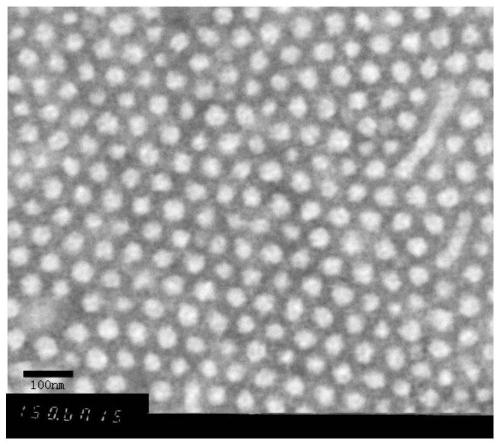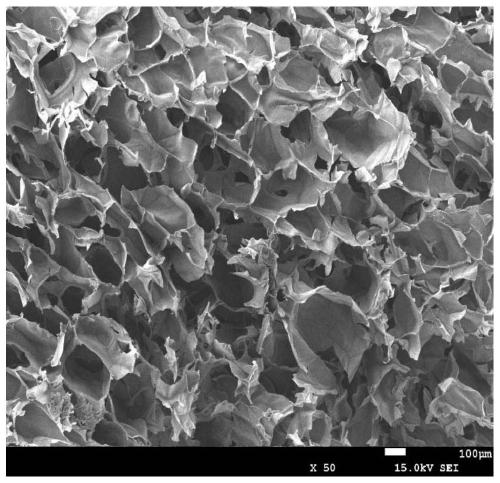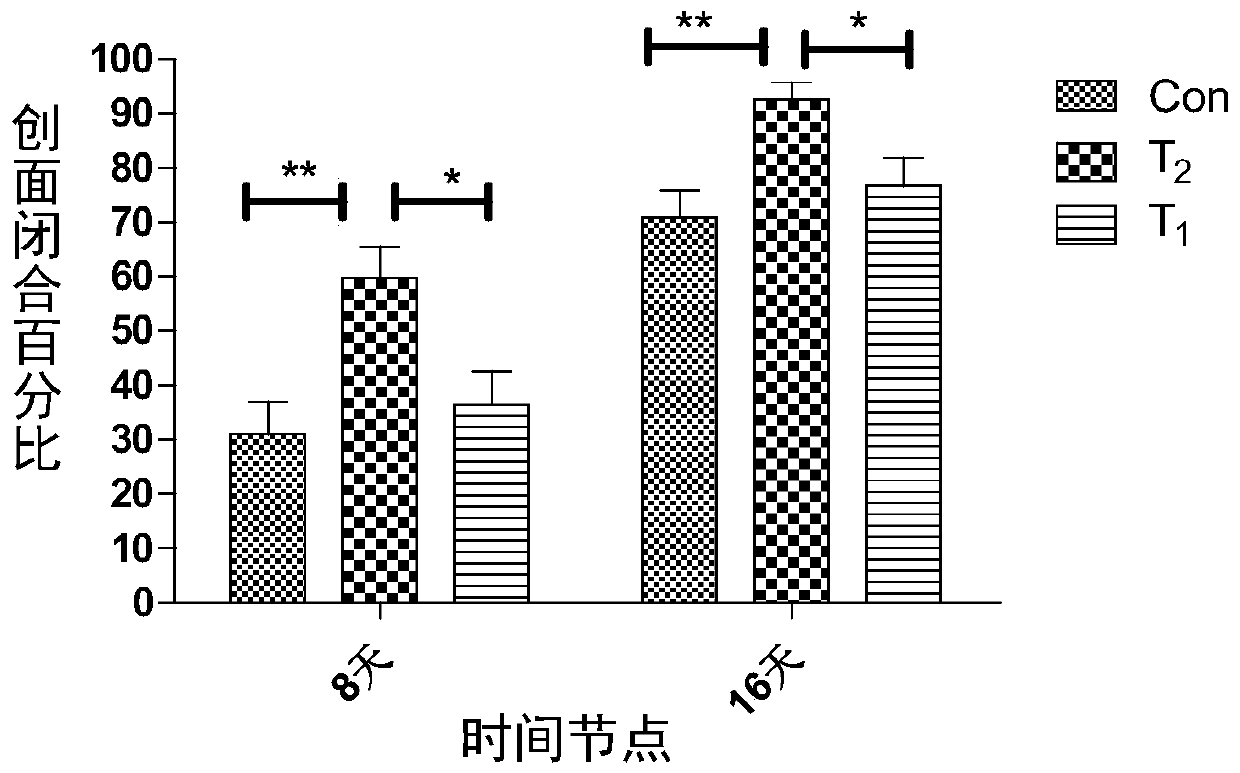Sodium alginate-chitosan dressing loaded with tetrahydrocurcumin nanoparticles and preparation method thereof
A technology of tetrahydrocurcumin and sodium alginate, applied in directions such as pharmaceutical formulations, bandages, capsule delivery, etc., can solve problems such as no reports of sodium alginate-chitosan dressings, etc., and achieve accelerated wound healing, good healing promotion, and beneficial effects. Effects of growth and regeneration
- Summary
- Abstract
- Description
- Claims
- Application Information
AI Technical Summary
Problems solved by technology
Method used
Image
Examples
Embodiment 1
[0041] Embodiment 1 The preparation method of the sodium alginate-chitosan dressing loaded with tetrahydrocurcumin nanoparticles of the present invention
[0042] Weigh 1 gram of sodium alginate and dissolve it in 50 milliliters of deionized water to obtain a sodium alginate hydrogel solution; weigh 1 gram of chitosan and dissolve it in 50 milliliters of deionized water to obtain a chitosan hydrogel solution. According to the ratio of 1:20, weigh 0.5 mg of tetrahydrocurcumin and 10 mg of carrier material MPEG-PLA, dissolve them in 2 ml of dichloromethane solvent, and remove the dichloromethane by rotary evaporation on a rotary evaporator at 60°C Finally, 5 mL of deionized water was added and shaken slightly, so that the material and drug self-assembled to form drug-loaded nanoparticles were completely dissolved in water to obtain a tetrahydrocurcumin nanoparticle solution. The tetrahydrocurcumin nanoparticle solution is slowly added dropwise into the sodium alginate hydrogel s...
Embodiment 2
[0044] Embodiment 2 The preparation method of the sodium alginate-chitosan dressing loaded with tetrahydrocurcumin nanoparticles of the present invention
[0045] Weigh 1 gram of sodium alginate and dissolve it in 50 milliliters of deionized water to obtain a sodium alginate hydrogel solution; weigh 1 gram of chitosan and dissolve it in 50 milliliters of deionized water to obtain a chitosan hydrogel solution. According to the ratio of 1:20, weigh 5 mg of tetrahydrocurcumin and 100 mg of carrier material MPEG-PLA, dissolve them in 2 ml of dichloromethane solvent, and remove the dichloromethane by rotary evaporation on a rotary evaporator at 60°C Finally, 5 mL of deionized water was added and shaken slightly, so that the material and drug self-assembled to form drug-loaded nanoparticles were completely dissolved in water to obtain a tetrahydrocurcumin nanoparticle solution. The tetrahydrocurcumin nanoparticle solution is slowly added dropwise into the sodium alginate hydrogel so...
Embodiment 3
[0046] Embodiment 3 The preparation method of the sodium alginate-chitosan dressing loaded with tetrahydrocurcumin nanoparticles of the present invention
[0047] Weigh 1 gram of sodium alginate and dissolve it in 50 milliliters of deionized water to obtain a sodium alginate hydrogel solution; weigh 1 gram of chitosan and dissolve it in 50 milliliters of deionized water to obtain a chitosan hydrogel solution. According to the ratio of 1:20, weigh 20 mg of tetrahydrocurcumin and 400 mg of carrier material MPEG-PLA, dissolve them in 2 ml of dichloromethane solvent, and remove the dichloromethane by rotary evaporation on a rotary evaporator at 60°C Finally, 5 mL of deionized water was added and shaken slightly, so that the material and drug self-assembled to form drug-loaded nanoparticles were completely dissolved in water to obtain a tetrahydrocurcumin nanoparticle solution. The tetrahydrocurcumin nanoparticle solution is slowly added dropwise into the sodium alginate hydrogel s...
PUM
| Property | Measurement | Unit |
|---|---|---|
| particle size | aaaaa | aaaaa |
| particle size | aaaaa | aaaaa |
| particle size | aaaaa | aaaaa |
Abstract
Description
Claims
Application Information
 Login to View More
Login to View More - R&D
- Intellectual Property
- Life Sciences
- Materials
- Tech Scout
- Unparalleled Data Quality
- Higher Quality Content
- 60% Fewer Hallucinations
Browse by: Latest US Patents, China's latest patents, Technical Efficacy Thesaurus, Application Domain, Technology Topic, Popular Technical Reports.
© 2025 PatSnap. All rights reserved.Legal|Privacy policy|Modern Slavery Act Transparency Statement|Sitemap|About US| Contact US: help@patsnap.com



